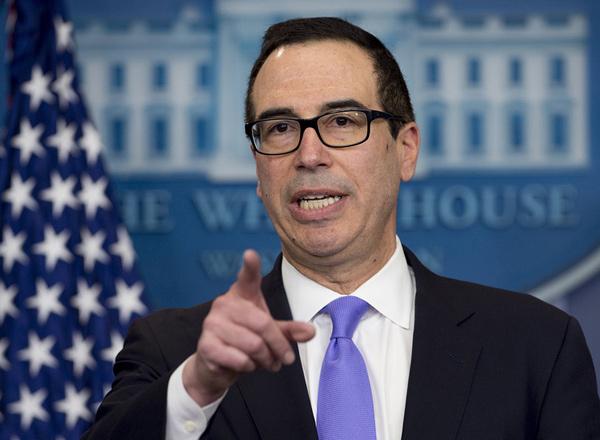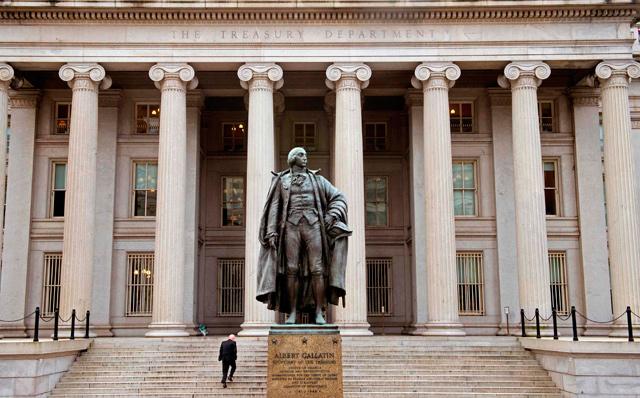You are here
US budget deficit soars to almost $1 trillion, highest since 2012
By AFP - Oct 26,2019 - Last updated at Oct 26,2019

This file photo shows US Treasury Secretary Steven Mnuchin during a press conference in Washington, DC (AFP file photo)
WASHINGTON — America's budget deficit rose to nearly $1 trillion in the 2019 fiscal year as government borrowing swelled, the US Treasury said on Friday.
The fourth straight year of broadening budget gaps underscored a new tolerance for yawning fiscal imbalances in the current political era.
Republican lawmakers' oft-stated fears of weak fiscal discipline under the prior administration have fallen by the wayside and trillion-dollar annual deficits look set to become a new normal.
The persistent increase in government borrowing also runs counter to President Donald Trump's campaign pledges in 2016 to eliminate or at least significantly reduce America's $19 trillion debt load.
The fiscal 2019 deficit jumped by 26 per cent to $984 billion, the highest since 2012, as spending outstripped tax receipts in the wake of the 2017 Republican-led tax cuts, according to the Treasury.
Tariffs imposed in Trump's multi-front trade confrontations also rose to a record $30 billion in the year ending September 30.
"President Trump's economic agenda is working", Treasury Secretary Steve Mnuchin said in a statement, calling on lawmakers to cut "wasteful and irresponsible spending".
The increase in the deficit paled in comparison to those recorded during and after the Great Recession of 2007 to 2009.
More than health care
But unlike that era, the current stretched fiscal reality coincides with a record economic expansion now in its 11th year.
With the economy growing, the government took in more money from workers, importers and companies, who paid $3.5 trillion in taxes, about four per cent more than in 2018.
But spending grew twice as fast, rising 8.2 per cent to $4.5 trillion, driven higher by rising interest on existing public debts, defence spending and outlays for social safety net programmes like Medicare and Social Security.
Borrowing from the public swelled to 79.1 per cent of GDP for the year, up from 77.5 per cent in the year before.
The 2019 fiscal year's deficit put Washington on a path to exceed forecasts from the non-partisan Congressional Budget Office, which in February said budget gaps should surpass $1 trillion beginning in 2022.
Mnuchin repeatedly argued that the sweeping cuts to corporate and personal income taxes in 2017 would spur economic growth, boosting tax receipts and help the tax cuts pay for themselves.
More recently, however, the White House has emphasised other priorities, with the president saying a stronger military is more important than a balanced budget.
The United States has run budget deficits every year since the late 1990s, an era which immediately preceded the 2001 terrorist attacks and the ensuing wars and recessions.
While interest rates have remained low in the last decade, the costs of US borrowing are rising. Interest on public debts paid by the Treasury in 2019 rose nearly 10 per cent to $572.8 billion.
That handily surpassed the $409.4 billion in federal spending on Medicaid, the health insurance programme covering scores of millions of low-income Americans.
Related Articles
WASHINGTON — The US budget deficit surged 218 per cent to a record $3.1 trillion in the fiscal year that ended on September 30 due to a mass
President Barack Obama urged top US market regulators this week to look for ways to tailor rules based on financial firms' size and complexity.
The United States on Wednesday renewed a warning that Europe risks falling into a downward spiral of falling wages and prices, saying recent actions by the European Central Bank (ECB) may not be enough to ward off deflation.

















